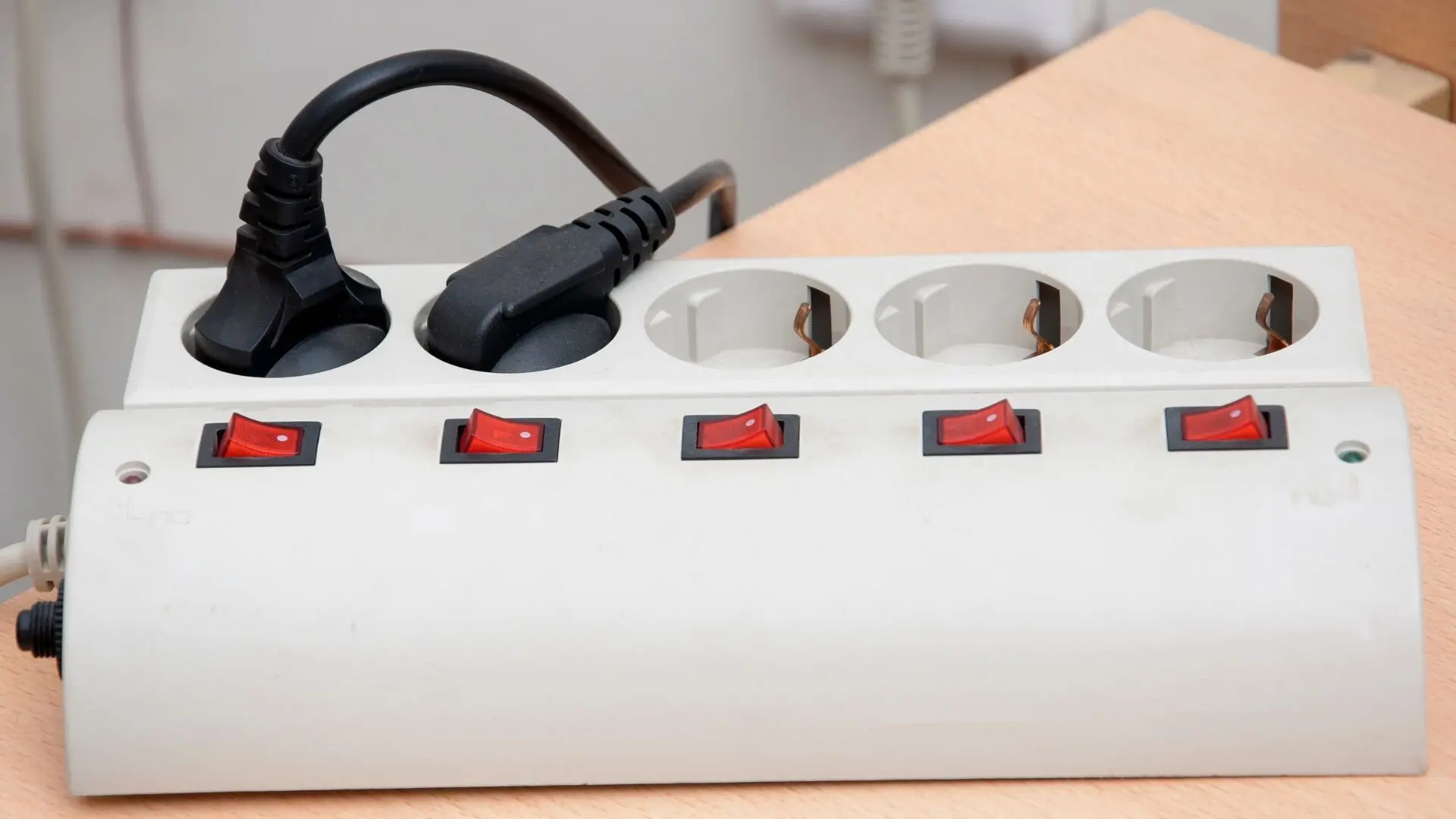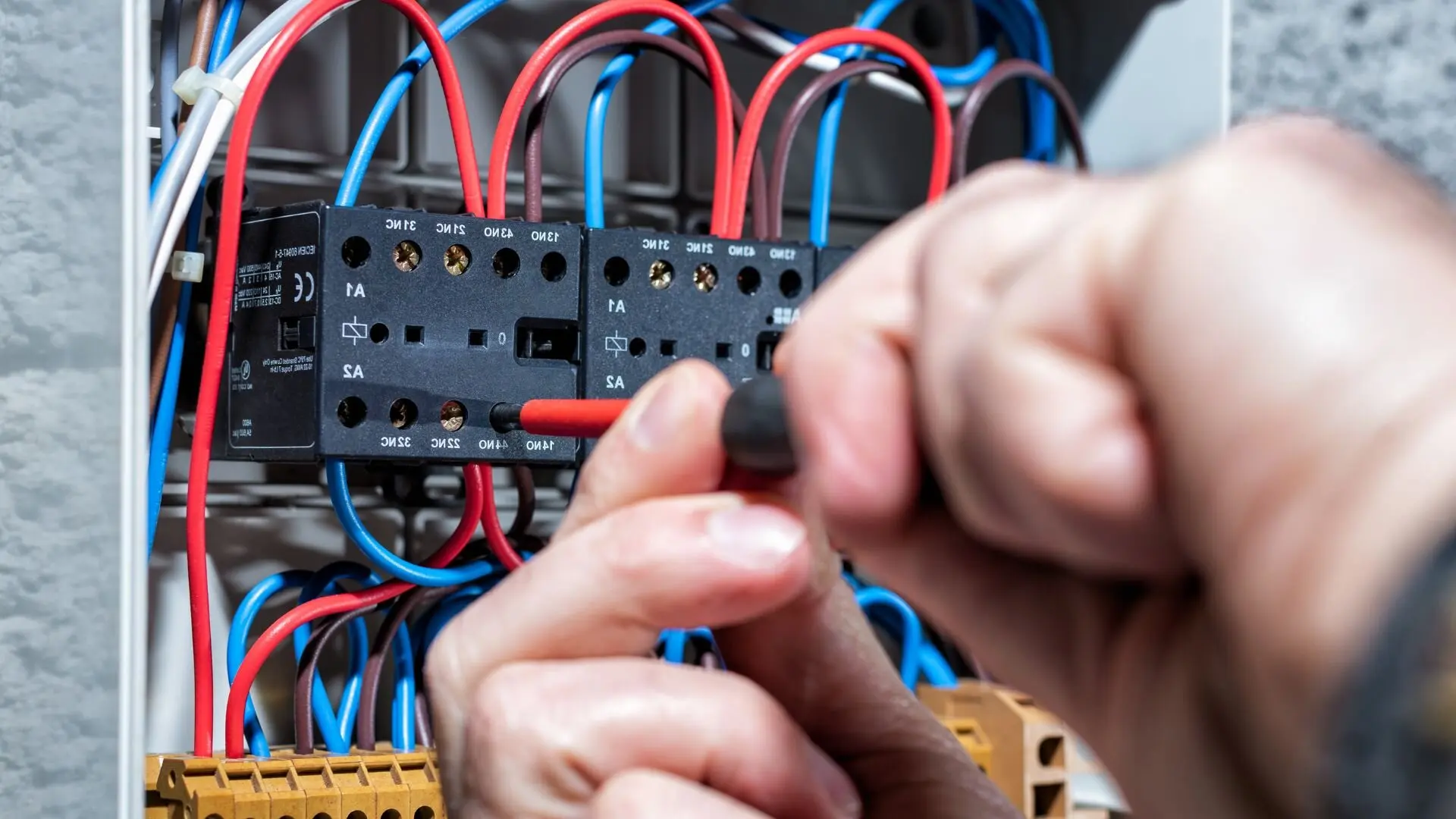Have you ever been working away on your computer when suddenly the lights flicker, your screen goes dark, and—bam! Your computer’s just died. That kind of jolt, often due to lightning or issues with the power grid, is a power surge. These spikes can fry sensitive circuits in your electronics, leading to a costly repair or a trip to the recycle bin.
That’s where surge protectors come in as knights in shining armour for your precious devices. They’re more than just handy power strips with extra outlets. Surge protectors contain clever tech that shields your electronics from these harmful surges. Not all surges are created equal, though. Some are quick, high-voltage spikes, while others are longer-lasting fluctuations. Regardless of the type, they can damage your computer, TV, gaming console, or anything else plugged in.
Here’s the great news: surge protectors can absorb excess electricity and safely channel it into the ground, keeping your tech safe. Learn more about residential wiring guide. Now, let’s delve into the inner workings of these essential devices and explore the benefits they offer.
What is a Surge Protector?
A surge protector, also known as a surge suppressor, is a safety device designed to safeguard your valuable electronics from the damaging effects of power surges and voltage spikes. These unexpected jolts can occur for various reasons, including lightning strikes, power grid malfunctions, or internal switching within your home’s electrical system.
Surge protectors primarily serve as shields, absorbing sudden voltage spikes and routing the excess current away from your devices. This measure helps prevent your electronics from overloading and getting damaged.
While different models cater to specific needs, most surge protectors come in two main forms:
- Power strips with surge protection: These combine the functionality of a traditional power strip – offering multiple outlets for connecting devices – with integrated surge protection circuitry.
- Surge protector bars: These standalone units provide dedicated surge protection outlets and are ideal for situations where additional power outlets aren’t needed.

When choosing a surge protector, it’s crucial to consider several key features:
- Number of outlets: Select a protector that offers enough outlets to accommodate all your intended devices. Consider future needs as well.
- Joule rating: This rating (measured in Joules) indicates the surge protector’s capacity to absorb excess energy. Generally, a higher Joule rating signifies better protection against stronger surges.
- USB charging ports (optional): If you plan to charge smartphones, tablets, or other USB-powered devices directly from the surge protector, consider models with built-in USB ports.
- Indicator lights: Look for models with lights that indicate surge protection status (active) and proper grounding (essential for effective protection).
- Warranty: A decent warranty period provides peace of mind, ensuring a replacement if the protector fails during its guaranteed lifespan.
How Surge Protectors Work
Voltage, akin to water pressure, is measured in volts (V). A higher voltage means more pressure, driving electricity through the wires. Typically, this pressure is stable, allowing your devices to function seamlessly.
However, our electrical grids aren’t perfect. Sometimes, sudden bursts of high voltage, called power surges or spikes, can surge through the lines. In our analogy, these spikes are like bursts of high water pressure – brief but potentially damaging. Surges can stem from various sources, including downed power lines, faulty wiring, or even lightning strikes.
This is where surge protectors step in, acting as the hero with a hidden weapon: the Metal Oxide Varistor (MOV). Think of an MOV as a special valve inside the surge protection device. During normal voltage conditions, the MOV acts like a standard valve, allowing electricity to flow to your connected devices, like water flowing through a pipe.
But when a surge hits, the MOV springs into action. It detects a significant increase in voltage – like a sudden rise in water pressure. Here’s the clever part: the MOV instantly changes its behaviour. Instead of acting like a valve, it becomes a conductor, a direct path for electricity. This process is dictated by its clamping voltage, the threshold at which it starts redirecting excess energy.
This is where the magic happens. The MOV diverts the excess voltage away from your delicate electronic equipment, acting like a safety outlet, and safely channels it to the ground wire. However, not all surge protectors are created equal. Some high-performance models, such as a transient voltage surge suppressor (TVSS), offer more robust protection, reducing the risk of long-term electrical damage.
It’s important to note that MOVs are like little warriors – they take a hit for your devices. While they can absorb multiple surges, a particularly large one can damage the MOV itself. Over time, or after a significant surge, they may need to be replaced to ensure continued protection for your power supply and connected devices.
Why Surge Protectors Are Essential for Your Tech Haven
Surge protectors aren’t just fancy power strips – they’re financial lifesavers for your valuable electronics. A small investment in a surge protector can shield your computer, entertainment system, and other devices from the perils of power surges and unexpected voltage spikes.
Financial Protection: Shielding Your Tech Investment
These sudden jolts can fry your devices in an instant, leaving you with a hefty repair bill or the need for a costly replacement. Surge protectors offer peace of mind. Knowing your tech is protected from unforeseen fluctuations in power allows you to relax and enjoy using your devices without the constant worry of a random surge causing a meltdown.
Safeguarding Your Data
But there’s more to consider. Power surges can also corrupt your stored data. Surge protectors act as a buffer, safeguarding cherished photos, important documents, and other digital treasures from being lost in an instant.
Promoting Longevity for Your Devices
Finally, using surge protectors can improve the overall lifespan of your electronics. By guarding against damaging surges, they help to ensure your devices operate reliably for longer, saving you money on replacements and repairs down the track. In essence, surge protectors are an investment in the health and longevity of your tech haven.
Power Up Protection: Using Surge Protectors Safely
To keep your surge protector working at its best, stick to these straightforward tips:

Grounded Connection
Always connect the surge protector directly to a properly grounded wall outlet. This ensures a safe path for excess voltage to discharge.
Avoid Overload
Check the surge protector’s capacity (measured in watts), and don’t plug in more devices than it can handle. Overloading can negate its protective abilities and even pose a fire hazard.
Location, Location, Location
Place your surge protector in a cool, dry, and easily accessible location. Avoid damp areas or direct sunlight, which can damage the internal components.
Extra Caution During Storms
While surge protectors offer excellent protection, during severe storms with frequent lightning strikes, consider powering down sensitive electronics for added safety. This minimises the risk of damage if a particularly strong surge overwhelms the protector.
Time to Retire Your Defender?
Certain surge protectors feature useful indicator lights. These lights can alert you when the internal MOV, a key component, has worn out and needs replacing.
Physical damage is another red flag. A burnt casing, loose cord, or any other abnormality means it’s time for a new protector.
Even without warning signs, consider replacing surge protectors every few years. This ensures they can effectively absorb surges and keep your valuable electronics safe.
Power Up with Confidence
Surge protectors have become essential tools in our electronics-filled lives. Understanding how they work and their key features empowers you to choose the right shield for your valuable devices. Remember, a small investment in surge protection can save you a big headache (and potentially a hefty repair bill) down the track.
For expert advice on selecting the perfect surge protector for your needs, contact Enersol Electrical today. We’ll ensure your tech haven is powered with confidence!